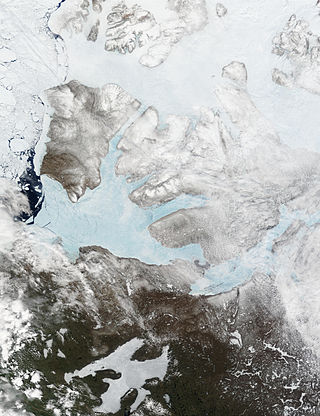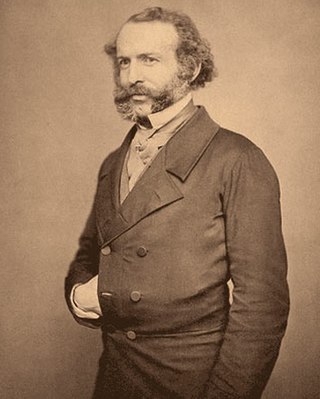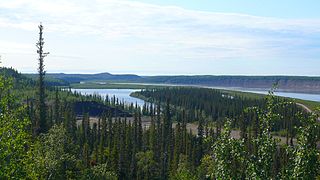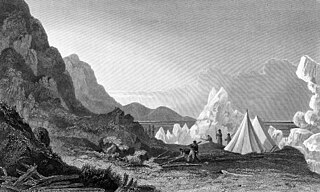Related Research Articles

The Back River, formerly Back's River, is the 20th longest Canadian river and is located in the Northwest Territories and Nunavut. It rises at an unnamed lake in the North Slave Region of the Northwest Territories and flows more than 974 km (605 mi) mostly through the Kivalliq Region, Nunavut, to its mouth at the Arctic Ocean in the Kitikmeot Region of Nunavut.

Banks Island is one of the larger members of the Arctic Archipelago. Situated in the Inuvik Region, and part of the Inuvialuit Settlement Region, of the Northwest Territories, it is separated from Victoria Island to its east by the Prince of Wales Strait and from the mainland by Amundsen Gulf to its south. The Beaufort Sea lies to its west, and to its northeast M'Clure Strait separates the island from Prince Patrick Island and Melville Island.

John Rae was a Scottish surgeon who explored parts of northern Canada.

The Mackenzie River is a river in the Canadian boreal forest. It forms, along with the Slave, Peace, and Finlay, the longest river system in Canada, and includes the second largest drainage basin of any North American river after the Mississippi.

Sir John Franklin was a British Royal Navy officer and Arctic explorer. After serving in wars against Napoleonic France and the United States, he led two expeditions into the Canadian Arctic and through the islands of the Arctic Archipelago, in 1819 and 1825, and served as Lieutenant-Governor of Van Diemen's Land from 1839 to 1843. During his third and final expedition, an attempt to traverse the Northwest Passage in 1845, Franklin's ships became icebound off King William Island in what is now Nunavut, where he died in June 1847. The icebound ships were abandoned ten months later and the entire crew died, from causes such as starvation, hypothermia, and scurvy.

Melville Island is an uninhabited member of the Queen Elizabeth Islands of the Arctic Archipelago. With an area of 42,149 km2 (16,274 sq mi), It is the 33rd largest island in the world and Canada's eighth largest island.
The Anderson River is in the Northwest Territories in northern Canada. It originates in lakes northwest of Great Bear Lake; its headwaters are possibly on the north side of Colville Lake in the vicinity of the hamlet of Colville Lake. It flows north and west in the area between the Mackenzie and Coppermine Rivers. Its mouth is on the Beaufort Sea on the Arctic Ocean near the eastern end of Liverpool Bay at about 70 degrees north latitude. Its main tributary is the Carnwath River. Originally known as the Beghula River it was renamed to the Anderson River in 1857 by Roderick MacFarlane after James Anderson, both of the Hudson's Bay Company. Anderson was the Chief Factor in the Mackenzie District.

Aulavik National Park ; from the Inuvialuktun for "place where people travel") is a national park located on Banks Island in the Northwest Territories of Canada. It is known for its access to the Thomsen River, one of the most northerly navigable rivers in North America. The park is a fly-in park, and protects approximately 12,274 square kilometres (4,739 sq mi) of Arctic Lowlands at the northern end of the island. The most practical way to visit the park is to charter a plane, and currently the park has four landing sites. Aulavik is considered a polar desert and often experiences high winds. Precipitation for the park is approximately 300 mm (12 in) per year. In the southern regions of the park a sparsely vegetated upland plateau reaches a height of 450 m (1,480 ft) above sea level.

Franklin's lost expedition was a failed British voyage of Arctic exploration led by Captain Sir John Franklin that departed England in 1845 aboard two ships, HMS Erebus and HMS Terror, and was assigned to traverse the last unnavigated sections of the Northwest Passage in the Canadian Arctic and to record magnetic data to help determine whether a better understanding could aid navigation. The expedition met with disaster after both ships and their crews, a total of 129 officers and men, became icebound in Victoria Strait near King William Island in what is today the Canadian territory of Nunavut. After being icebound for more than a year Erebus and Terror were abandoned in April 1848, by which point Franklin and nearly two dozen others had died. The survivors, now led by Franklin's second-in-command, Francis Crozier, and Erebus's captain, James Fitzjames, set out for the Canadian mainland and disappeared, presumably having perished.

HMS Investigator was a merchant ship purchased in 1848 to search for Sir John Franklin's ill-fated Northwest Passage expedition. She made two voyages to the Arctic and had to be abandoned in 1853, after becoming trapped in the pack ice.
Peter Warren Dease was a Canadian fur trader and Arctic explorer.

Franklin Bay is a large inlet in the Northwest Territories, Canada. It is a southern arm of the Amundsen Gulf, southeastern Beaufort Sea. The bay measures 48 kilometres (30 mi) long, and 40 kilometres (25 mi) wide at its mouth. The Parry Peninsula is to the east, and its southern area is called Langton Bay.

The Inuvialuit Settlement Region, abbreviated as ISR, located in Canada's western Arctic, was designated in 1984 in the Inuvialuit Final Agreement by the Government of Canada for the Inuvialuit people. It spans 90,650 km2 (35,000 sq mi) of land, mostly above the tree line, and includes several subregions: the Beaufort Sea, the Mackenzie River delta, the northern portion of Yukon, and the northwest portion of the Northwest Territories. The ISR includes both Crown Lands and Inuvialuit Private Lands.
The Baillie Islands are located off the north coast of Cape Bathurst in the Northwest Territories, Canada. The islands formed part of the area used by the Avvaqmiut who are a branch of the Inuvialuit.

The McClure Arctic expedition of 1850, among numerous British search efforts to determine the fate of the Franklin's lost expedition, is distinguished as the voyage during which the Irish explorer Robert McClure became the first person to confirm and transit the Northwest Passage by a combination of sea travel and sledging.
The Rae–Richardson Arctic expedition of 1848 was an early British effort to determine the fate of the lost Franklin Polar Expedition. Led overland by Sir John Richardson and John Rae, the party explored the accessible areas along Franklin's proposed route near the Mackenzie and Coppermine rivers. No contact with Franklin's party was achieved and Rae later interviewed the Inuit of the region, from whom he obtained credible accounts that the desperate remnants of Franklin's party had resorted to cannibalism. This revelation was so unpopular that Rae was shunned by the Admiralty and popular opinion; the search for Franklin continued for several years.
Edward Nicholas "Ned" Kendall, R.N. was an English hydrographer, an officer in the Royal Navy, and polar explorer. During one of his Arctic expeditions, Kendall became the first known European to sight Wollaston Land.
The Kendall Island Migratory Bird Sanctuary (KIBS) is a migratory bird sanctuary in the Northwest Territories, Canada. It is located on Kendall Island and its surrounding area in Mackenzie Bay at the northern tip of the Mackenzie River Delta. A seasonal sanctuary for more than 60,000 shorebirds. it is one of five bird sanctuaries within the Inuvialuit Settlement Region. The area that is now known as the KIBS is a traditional Inuvialuit whaling site.

The Mackenzie River expedition of 1825–1827 was the second of three Arctic expeditions led by explorer John Franklin and organized by the Royal Navy. Its goal was the exploration of the North American coast between the mouths of the Mackenzie and Coppermine rivers and Bering Strait, in what is now present-day Alaska, Yukon, the Northwest Territories, and Nunavut. Franklin was accompanied by George Back and John Richardson, both of whom he had previously collaborated with in the disastrous Coppermine expedition of 1819–1821. Unlike Franklin's previous expedition, this one was largely successful, and resulted in the mapping of more than 1,000 km (620 mi) of new coastline between the Coppermine River and Prudhoe Bay, Alaska, an area that until then had remained largely unexplored by Europeans.
References
- ↑ Bredin, T.F. (1962). ""Whale Island" and the Mackenzie Delta: Charted Errors and Unmapped Discoveries 1789 to 1850" (PDF). Arctic. Arctic Institute of North America, University of Calgary. 15 (1): 58. doi:10.14430/arctic3557.
- ↑ "69.49,-135.288(Kendall Island)" . Retrieved September 17, 2010.
- ↑ Berkes, Fikret (2005). Breaking ice: renewable resource and ocean management in the Canadian north. Vol. 1. Arctic Institute of North America. University of Calgary Press. p. 99. ISBN 1-55238-159-5.
- ↑ Great Britain Admiralty, Edwin J. De Haven, United States Navy Dept, Hudson's Bay Company (1852). Arctic expedition: Further correspondence and proceedings connected with the Arctic expedition. G. E. Eyre and W. Spottiswoode. p. 35.
{{cite book}}: CS1 maint: multiple names: authors list (link) - ↑ "Kendall Island Sanctuary, Other Critical Bird Habitat Threatened by Mackenzie Gas Project". Nature Canada. January 17, 2006. Retrieved September 17, 2010.
- ↑ Franklin, Sir John; Richardson, Sir John (1828). Narrative of a second expedition to the shores of the polar seas, in the years 1825,1826, and 1827. Carey, Lea and Carey. p. 49.
name kendall.
- ↑ Burnett, James Alexander (2003). A Passion for Wildlife: The History of the Canadian Wildlife Service . UBC Press. p. 20. ISBN 0-7748-0961-2.
kendall Island.